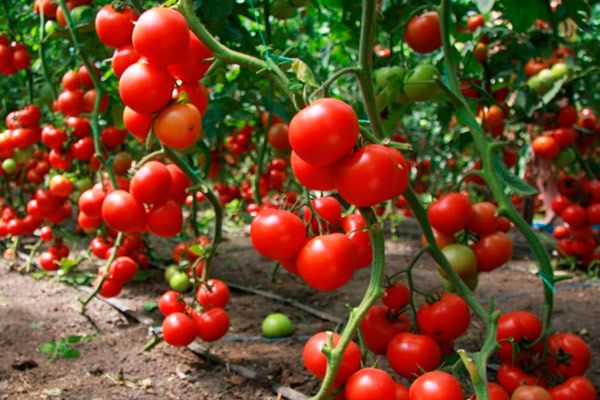Tomatoes are considered one of the most popular vegetables, so it is difficult to find a vegetable garden on which there is none. However, not every owner can boast of a generous harvest and large fruits. The main part of the problem of growing tomatoes is non-compliance with the rules of agricultural technology.
To get a rich harvest you need to take care of plants properly, because to grow a vegetable in different regions, not all varieties will do.
Table of contents
What actions are included in the cultivation of tomato cultivation
Many gardeners lovers believe that the entire care of the tomato beds is watering and weeding. In fact, with such scant attention, even the most prolific and disease-resistant hybrids will not yield high yields. Let's try to understand in more detail the generally accepted rules for growing tomatoes.
Agricultural technology of growing tomatoes consists of the following items:
- selection of seeds (in particular varieties) - certain varieties of tomatoes are suitable for each region;
- preparation of seed for planting (soaking for the purpose of disinfecting and stimulating growth);
- creation of conditions for growing seedlings (lighting, temperature, watering, feeding);
- picking seedlings;
- the choice of a site for a bed and preparation of the soil;
- transplanting seedlings to the beds;
- watering;
- fertilization;
- disease prevention;
- weeding and loosening the soil;
- the formation of bushes and pasynkovanie, garter tall plants (even if the tomato is short, you should not retreat from these rules);
- harvesting.
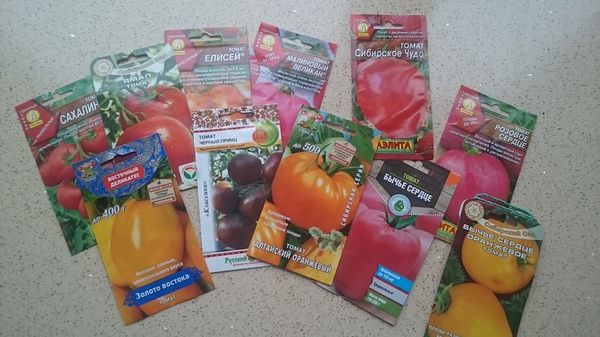
In addition to the main steps are applied additional eventspromoting a better culture:
- mulching beds;
- treatment of seedlings with growth promoters;
- the construction of a temporary shelter to protect against spring frosts (film or agrofibre);
- planting in the neighborhood of pest-repelling crops.
What kind of soil do tomatoes like?
Tomatoes can grow practically on any soilsThe question is in the amount of preparatory work.
The best cultivation results are noted. on nutrient friable soils with good moisture and breathability. Such qualities are, for example, loam. The medium should be neutral or slightly acidic, but not acidic.
Before landing you need check pH using laboratory tests or litmus paper. If the value exceeds the value of 5.5-6.5, then treatment should be carried out to adjust the acidity. To do this, on the surface of the soil is sprayed dolomite flour or crushed lime,which then rake gently mixed with the ground.
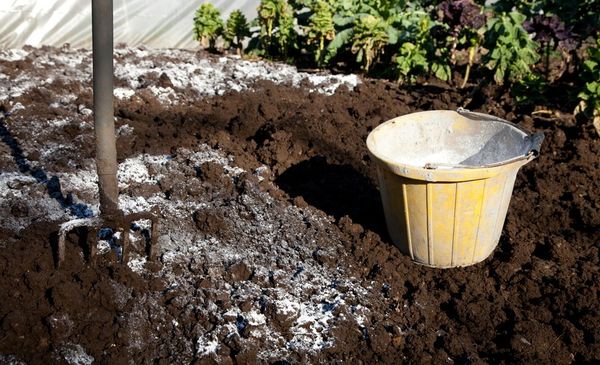
The soil for tomatoes should be fertile, enriched with potassium, nitrogen, phosphorus, iron, zinc and other trace elements.
When fertilizers are applied at the stage of preparation of the site for planting seedlings, both organic fertilizers and complex mineral fertilizers are used. However, it is worth considering that don't get into nutrient mixesYou can burn out young shoots or provoke an intensive growth of greenery to the detriment of the formation of fruits.
The predecessors can deplete the soil so much that it is unlikely to get large tomato fruits. The same applies to the rules of crop rotation, planting crops in the same area is not recommended.
How to prepare the soil for tomatoes
Depending on the degree of nutritional value of the soil and its structure, optimal variants of fertilizers are selected.
In the greenhouse
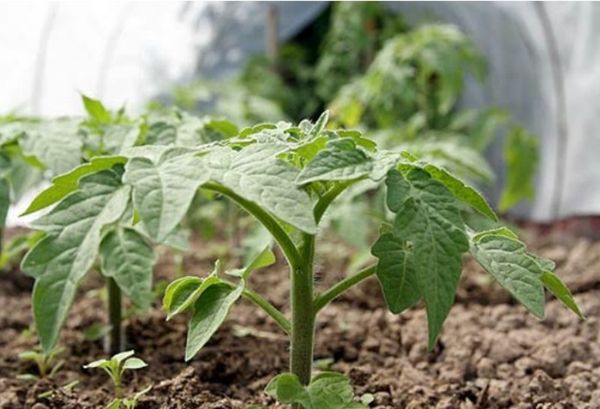
Do the preparation of the soil in the greenhouse should be more from the fall.To get started is get rid of all vegetable garbagepests and pathogens successfully winter with it.
For the production of biohumus it is recommended immediately after harvesting. land the siderata (for example, mustard). By winter, they grow up, and they can be cut. Assess the results of labor will turn out in the spring, the soil will be improved, cleared of weeds and enriched with nutrients.
If outbreaks of diseases were noticed during the season, then the soil will need to be changed. For this, a 20-30 cm layer is completely removed and taken out of the greenhouse. All surfaces of the structure must be treated with fungicides. Additionally use sulfur checker.
A new layer of healthy soil follows enrich with manure, compost or complex mineral fertilizers. The best composition of soil mixture for the greenhouse includes the following components:
- fertile garden land;
- peat;
- river coarse sand;
- compost;
- rotted manure.
In the spring, the greenhouse surfaces need to be cleaned again, and process a special solution (for example, Baikal-EM) for disinfection and pour boiling water over the bed to warm up the earth.
2 weeks before planting, superphosphate (30 g.), Ammonium nitrate (20 g.) And potassium sulfate (15 g.) Are introduced into the soil. Fresh manure in the spring is not used, it provokes the growth of foliage, slowing the formation of fruits.
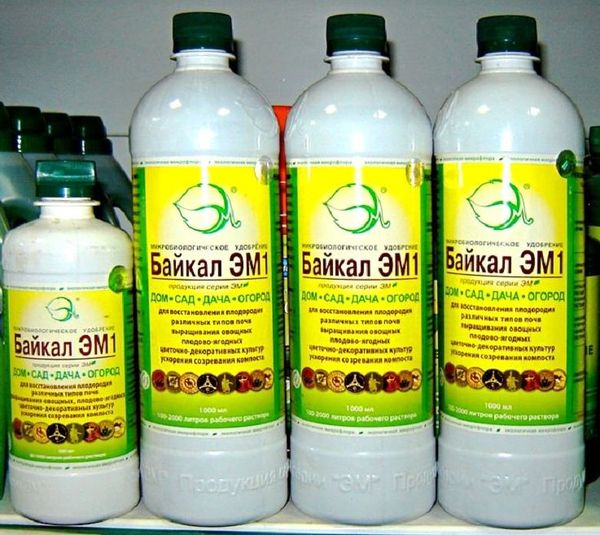
In the open ground
Garden beds are also prepared in the autumn. For this follows remove all plant debris and dig up the earth with a depth of immersion tool on a bayonet shovel. Simultaneously with digging injected organic (compost, manure) at the rate of 6-8 kg per 1 m2.
In spring, the bed is again dug up and 1-2 weeks before planting processed by hot copper sulfate solution (for disinfection). To keep the ground cool, it is covered before planting the seedlings with a film.
During planting, a nutrient mixture is poured into each well: humus, compost, peat, wood ash.
The rules of growing tomatoes to get a good harvest
Fertilizer
During the growing season tomatoes are necessary feed several timesthen yields can be significantly increased.
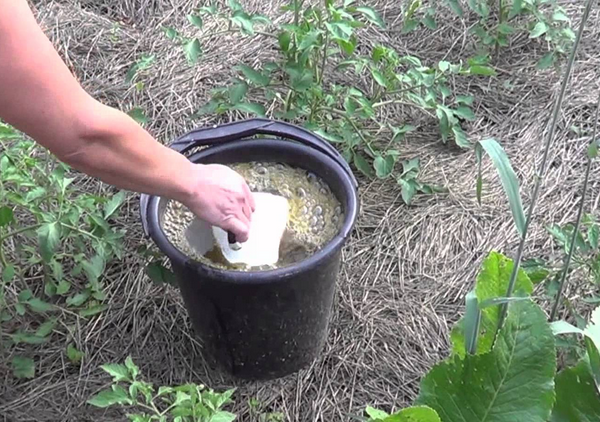
In the open ground the first portion is administered a week after planting the seedlings. A solution of 10 liters of water, Art. l Nitrophosphate and 500 ml of liquid mullein. About 0.5 liters is spent on each bush.
The second time lure contribute to the flowering period. At this stage, a solution of 10 liters of water, 500 ml of liquid chicken manure, Art. l superphosphate, tsp potassium sulfate.
After 10 days, the plant can be fed with a solution based on Agricola Vegeta or Signor Tomato. After another 10-14 days, the beds are enriched with a product based on 10 liters of water, 1 tbsp. l potassium humate (or sodium).
In the greenhouse The first feed is introduced into the wells when planting seedlings, the hole is filled with compost, humus and wood ash.
The second portion of the nutrient mixture is introduced after 2-3 weeks. In a bucket of water, fertilizers are diluted: nitrogen (25 gr.), Potash (15 gr.), Phosphate (40 gr.). Under each bush pour in 1 liter of the working solution.
The following dressing contribute to the period of mass flowering. From nutritional mixtures suitable composition based on water (10 liters), liquid mullein (500 ml) and potassium sulfate (15 g.). Under each bush pours 1-1.5 liters of fluid.
Subsequent procedures are carried out with an interval of 10-14 days (nitrophosphate, potassium humate and other means are used).
Shrub formation
The main stem comes from the root, from below are sheets, in the axils of which stepchildren are formed. Thanks to them, the plant forks, taking on most of the nutrients.
The whole process proceeds to the detriment of the formation of ovaries and fruits due to lack of nutrition. therefore Every 5 days you must remove the stepsonsand form a tomato with a certain number of stems.
This procedure is carried out regardless of the place of cultivation of the crop, whether it is open ground or greenhouse.
Correct watering
Irrigation in open beds is carried out 1-2 times a week. In hot, dry weather, regular irrigation increases. up to 3-4 times. However, the decisive factor is the degree of soil moisture. Increased moisture content provokes the development of fungal infections, so you should not get involved in irrigation.
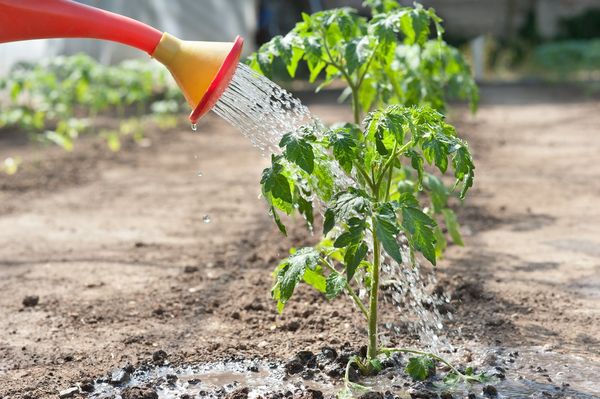
In the greenhouse irrigation rates are regulated depending on the humidity of the air and soil. As a rule, procedures are performed using a drip or underground irrigation system.
Loosening and mulching
To enrich the soil with oxygen and prevent crust formation in greenhouses and open ground, loosening is carried out, which is often combined with weeding.
The first procedure is carried out after the first irrigation with immersion into the ground at a depth of 8-10 cm. Subsequent ripping involves a 3-4 cm depth. Interval of events - 3-4 times per season, but until the bushes grow. After complete formation, extra passages between plants can injure them.
In the greenhouse, the first loosening is also performed after watering. Subsequent procedures are performed. every 2 weeks until the rows close together.
The thickness of the layer must be within 6-7 cm (after the material sits). Also used as mulch are: burlap, newsprint, shredded tree bark, dried cut grass, etc.
Secrets of growing tomatoes and getting a rich harvest of fruits
Each experienced gardener has his own secrets, which guarantee high yields, even under adverse weather conditions. Among the effective and interesting are the following tips.
- To increase the yield during the flowering period of the second and third brush recommended spray the plant with a solution of boric acid (low concentration). Boron promotes pollen germination, formation of ovaries and fruiting.
- Most tomatoes are self-pollinating. But under adverse conditions, the process of pollination is carried out poorly, so the plant will not interfere with human assistance. For this you need a little shake the bush at intervals of 1 every 3-6 days.
- Mulching of beds with tomatoes prevents drying of the earth, the formation of a crust on the surface of the soil. In addition, mulch reduces the growth rate of weeds - the main enemy of vegetable crops.
- Autumn soil preparation provides an increase in yield, if compost is used as fertilizer, manure in combination with peat.
- The pasting for many gardeners remains an undeveloped event, therefore, to get the fruits with the characteristics described on the label of the seeds, it turns out far from all. Removing the useless shoots redirects the flow of food and energy to the formation of large tomatoes. In addition, they have time to mature before the end of the season.
In general, agricultural technology is not difficult, although it has some features, but it is quite possible to increase the yield. After gaining experience in growing tomatoes, it is reasonable to make your own adjustments and best practices for the care rules, and then share with them on the forums.
